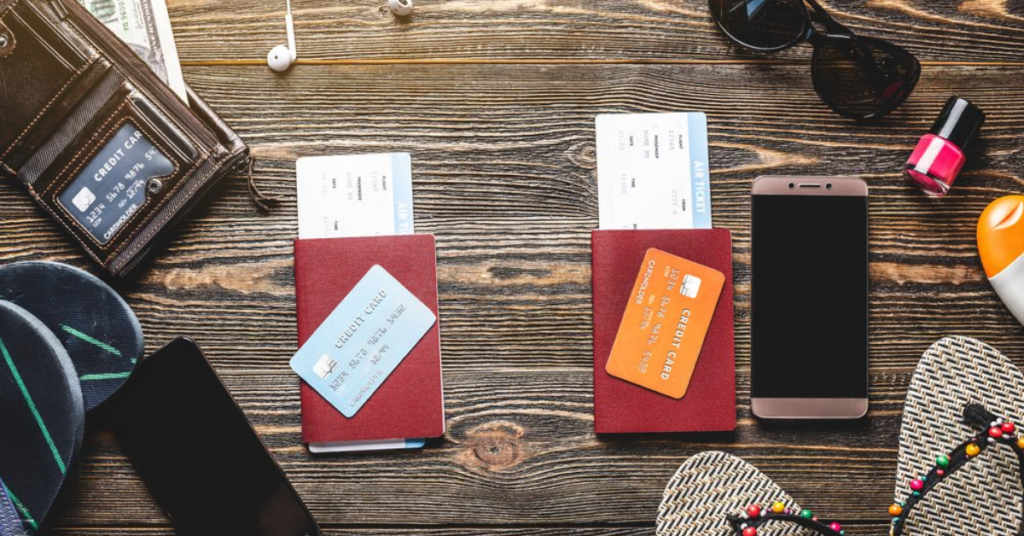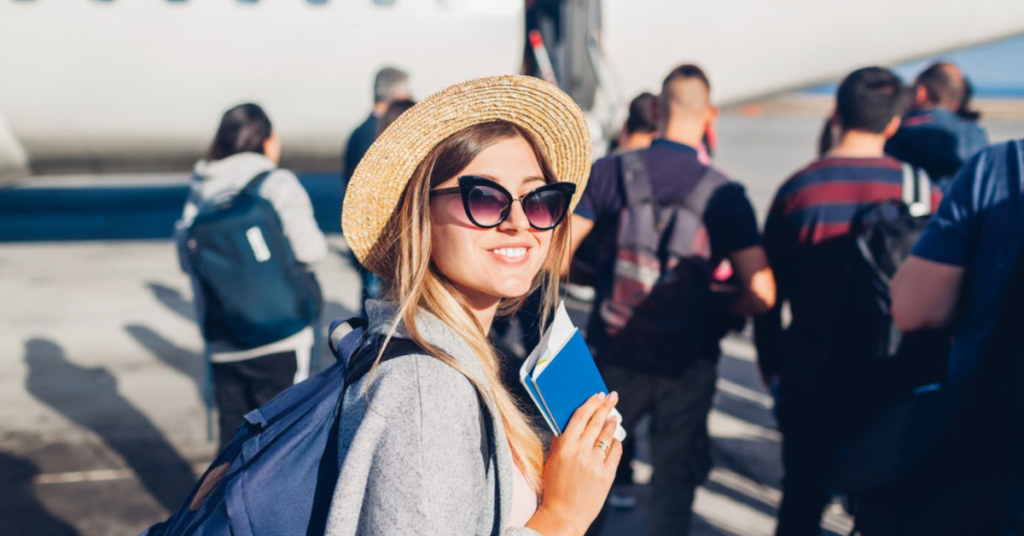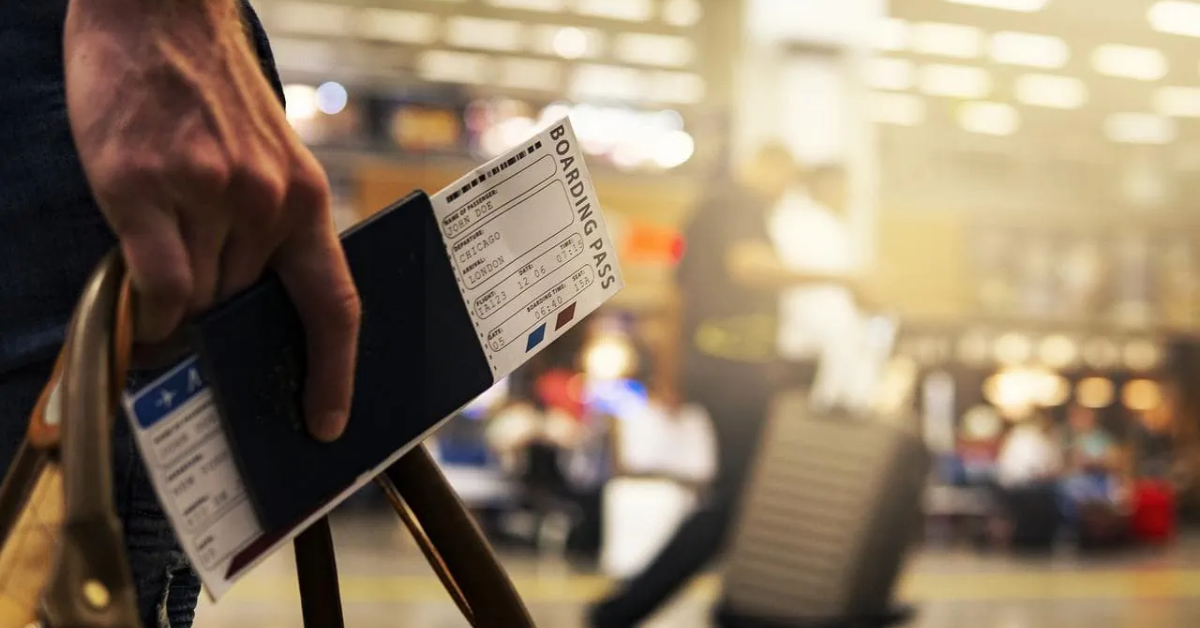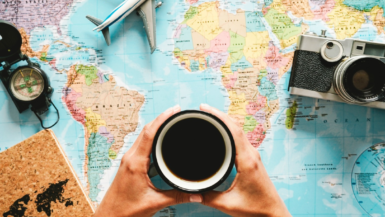There’s nothing quite like the thrill of preparing for an international trip—the promise of new cultures, mouthwatering cuisine, and memories waiting to be made. But let’s face it: the excitement can easily unravel if you forget something vital. A missing document or overlooked detail can throw a wrench in your plans faster than you can say “boarding pass.”
That’s where an international travel checklist comes to the rescue. It’s more than a to-do list; it’s your secret weapon for staying stress-free and fully immersed in the joy of travel. By planning ahead, you’ll avoid last-minute scrambles and ensure everything runs smoothly.
In this guide, you’ll learn how to organize key documents, manage finances, and pack like a pro. With this checklist for international travel, you’ll be ready to explore the world with ease, leaving the stress behind and focusing on the adventure ahead.
Gather Essential Travel Documents

Traveling internationally is one of life’s greatest adventures, but being unprepared with your documents can quickly derail the experience. Having every detail squared away before you even leave home is not just smart—it’s essential. Missing or incomplete paperwork at a border or checkpoint isn’t just an inconvenience; it can bring your trip to a standstill. That’s why a solid international travel checklist starts here.
Passport and Visa
Your passport is the most important item you’ll carry. I always check its expiration date well in advance, ensuring it’s valid for at least six months beyond my planned return. That’s a requirement for many countries, and there’s no point risking complications over something avoidable. If you need a visa, researching early is crucial. Some countries allow on-arrival visas, but others demand detailed applications that can take weeks to process. Personally, I always keep a photocopy of my passport and a digital backup on my phone or cloud storage. It’s a simple step, but it can save you so much trouble if the original gets lost.
Travel Insurance and Health Documentation
Travel insurance is an absolute must for me. It’s the safety net that covers emergencies like canceled flights, lost luggage, or unexpected medical issues. I’ve heard too many stories of travelers regretting skipping this step. If you’re headed to a destination with specific health requirements, like vaccination certificates for yellow fever or COVID-19, it’s important to have those documents ready. I always make sure these are organized alongside my insurance details—it keeps things stress-free at customs or border checks. Including this in your checklist for international travel ensures you’re covered for anything unexpected.
Emergency Information
In a foreign country, knowing how to get help if something goes wrong is invaluable. I always have the contact details of my country’s embassy or consulate saved, both digitally and on paper. It’s also smart to have emergency contacts back home who can step in if needed. On top of that, I back up key documents—like visas, travel insurance policies, and my itinerary—on secure cloud storage. It’s quick to do and offers peace of mind.
Financial Preparations for Your Trip

Financial preparation is the backbone of stress-free international travel. I’ve experienced how small oversights—like a declined card or surprise fees—can quickly snowball into unnecessary frustration. By prioritizing this step in your checklist for international travel, you can ensure your finances are ready for anything.
Inform Your Bank and Credit Card Providers
Letting your bank and credit card providers know about your travel plans is non-negotiable. It’s a simple process, and most banks allow you to do this online or through their app. For example, I’ve used tools like Chase’s travel notification feature or American Express’s secure app to notify them in minutes. This avoids the risk of having your cards flagged for suspicious activity.
Currency and Exchange
Before traveling, I always research the local currency and familiarize myself with the current exchange rate. Websites like XE.com and apps like Revolut are my go-to resources for this. I typically convert a small amount of cash before leaving—just enough for transportation or meals on arrival. For additional withdrawals, I rely on ATMs from reputable banks abroad, which usually offer better rates than exchange kiosks. N26 is another app I like for managing currency conversions directly through a card with low international fees.
Emergency Backup Funds
Carrying multiple payment methods is essential. I always travel with at least two cards—one stored separately as a backup—and keep a small stash of emergency cash. Cards like Wise (formerly TransferWise) are excellent for travel because they offer prepaid options and support multiple currencies. If I’m heading somewhere remote or cash-heavy, I make sure my backup funds are in small denominations to avoid issues with vendors unable to make change.
Budgeting for the Trip
Budgeting tools make it easier to plan daily expenses without overspending. Apps like Trail Wallet are incredibly user-friendly for tracking expenses on the go, breaking down your spending by category and showing your remaining daily budget. I also use Mint to get a clear picture of my overall financial health before traveling.
Apps and Tools
The right apps can save you both time and money. Here are some I’ve used or recommend:
- Revolut: Perfect for currency exchange and fee-free card payments abroad.
- XE Currency: Ideal for real-time exchange rates.
- Trail Wallet: Designed for travelers to track expenses effortlessly.
- Splitwise: Great for splitting costs with travel companions.
- Wise: A reliable prepaid card with competitive exchange rates and multi-currency support.
- Google Pay/Apple Pay: Widely accepted for quick, contactless payments.
- ATM Locator by Mastercard or Visa: Helps you find fee-free ATMs wherever you are.
Health and Safety While Traveling

Ensuring your well-being while exploring new destinations is paramount. From vaccinations to securing your belongings, proactive measures can prevent unforeseen challenges. Here’s how to incorporate health and safety into your international travel checklist.
Vaccinations and Health Advisories
Before embarking on any journey, it’s crucial to research the necessary vaccinations and health requirements of your destination. Resources like the Centers for Disease Control and Prevention (CDC) and the World Health Organization (WHO) provide up-to-date information on required immunizations and current health advisories. For instance, certain countries may require proof of yellow fever vaccination or updated COVID-19 vaccination certificates. Ensuring you have these documents organized, both physically and digitally, can facilitate smooth entry into your destination.
Medications
Traveling with medications requires careful planning. It’s advisable to pack enough prescription medication to last the entire trip, plus a few extra days in case of unforeseen delays. Carrying a copy of your prescription, including the generic names of the medications, can be beneficial if you need a refill abroad or if questioned by customs officials. Keeping medications in their original packaging helps avoid confusion and ensures compliance with international regulations. Additionally, bringing over-the-counter medications such as antihistamines, motion sickness tablets, and pain relievers can be invaluable during your travels.
First Aid Kit
A well-stocked first aid kit is an essential component of any traveler’s gear. According to the American Red Cross, a basic travel first aid kit should include:
- Adhesive bandages of various sizes
- Antiseptic wipes
- Tweezers
- Pain relievers like ibuprofen or acetaminophen
- Blister treatment pads
- Rehydration salts
Pre-assembled kits, such as the Surviveware Small First Aid Kit, offer comprehensive supplies in a compact, travel-friendly format. Reviewing the contents of these kits and supplementing them with any additional items specific to your needs or destination is advisable.
Packing these might seem excessive, but they’ve saved me multiple times, especially in destinations where finding a pharmacy wasn’t straightforward.
Safety Precautions
Staying safe abroad involves a combination of vigilance and practical measures. Here are some tips to enhance your safety:
- Secure Your Belongings: Use crossbody bags with zippers and avoid displaying valuable items that might attract unwanted attention.
- Stay Informed: Research common scams in your destination. For example, in some tourist areas, overly friendly strangers may attempt to distract you while an accomplice targets your belongings.
- Emergency Contacts: Save local emergency numbers, such as the equivalent of 911, in your phone and keep a written copy as a backup.
- Stay Connected: Share your itinerary with a trusted friend or family member and establish regular check-in times.
The U.S. Department of State offers a comprehensive traveler’s checklist that includes safety tips and resources.
Travel Insurance Benefits
Travel insurance is a critical component of your travel preparations. It provides coverage for unexpected events such as medical emergencies, trip cancellations, and lost luggage. Top-rated travel insurance companies include:
- Travel Insured International: Offers comprehensive plans with robust benefits at competitive prices.
- WorldTrips: Provides plans tailored for international travelers, including coverage for emergency medical expenses and evacuation.
- AXA Assistance USA: Known for high coverage limits and extensive global assistance services.
When selecting a policy, ensure it covers health-related scenarios pertinent to your destination and activities. For instance, if you’re planning adventure sports, verify that your insurance includes coverage for such activities.
Pack Smart with a Comprehensive Travel List

Packing can feel overwhelming, but I’ve learned that having a clear international travel packing list takes the guesswork out of the process. Overpacking is tempting, but I always remind myself that practicality wins over carrying items I won’t use. Whether it’s clothing, toiletries, or gadgets, the goal is to stay organized and ready for anything while keeping things manageable.
Clothing
Packing for different climates or cultural norms requires some thought. I always consider layering—it’s a flexible approach that works for various temperatures without adding bulk. A lightweight jacket, a few versatile tops, and comfortable bottoms are staples for me. I think about activities too; activewear for hikes, casual outfits for exploring, and one polished option for dinners or formal settings. If the destination has cultural expectations, like covering shoulders or knees, I adjust my wardrobe to respect those norms.
Limiting shoes is another lesson I’ve taken to heart. A pair of walking shoes, something dressy, and maybe flip-flops for warmer destinations are usually enough. Packing cubes are my secret weapon for keeping everything compact and organized.
Toiletries and Personal Items
Toiletries can quickly become cumbersome, so I always stick to travel-sized products. Items like shampoo bars are great because they take up less space and won’t leak in your bag. Reusable items, like silicone travel bottles, are another go-to for me. Sunscreen is essential for almost any trip, and I always bring insect repellent if I’m heading somewhere tropical.
I also carry personal essentials like a good deodorant, a small hairbrush, and basic skincare items. Keeping it minimal doesn’t mean leaving out the essentials, but I avoid bringing full-size bottles that take up space unnecessarily.
Electronics and Accessories
I can’t imagine traveling without my electronics, but they need preparation too. Portable power banks are a must—there’s nothing worse than running out of battery when you’re using maps or snapping photos. I also bring universal travel adapters because different countries use different plug types.
Making sure my gadgets are travel-ready is part of my routine. That means downloading offline maps, charging all devices before leaving, and packing a small pouch for cables and chargers to avoid tangling.
Comfort and Entertainment
Long flights or train rides call for some extra planning. I always bring a travel pillow and noise-canceling headphones for comfort. E-books or a good audiobook app keep me entertained during downtime. If I know I’ll have long stretches without Wi-Fi, I preload movies or episodes on my tablet.
Packing Tips
Keeping my luggage organized is essential for staying stress-free during a trip. Rolling clothes instead of folding them saves space and keeps them wrinkle-free. Packing cubes let me separate items like clothes, toiletries, and accessories so I can find what I need quickly.
I also think about dividing important items between my checked luggage and carry-on. It’s insurance against lost bags—having a change of clothes, some toiletries, and chargers in my carry-on means I’m covered even if my luggage is delayed.
Specialty Items
There are always extras that make travel smoother. I always bring a reusable water bottle—hydration is key, and it’s better for the environment. Snacks, like protein bars or trail mix, are another staple for long travel days. I pack a collapsible tote bag, too. It’s useful for carrying items during day trips or for shopping excursions.
Final Preparations Before You Leave

There’s nothing quite like the excitement before a trip, but that final stretch of preparation is where you either secure peace of mind or scramble unnecessarily. I’ve learned that having a clear system in place before heading out makes all the difference. These are the steps I always include in my international travel checklist to make sure everything is in order.
Home Arrangements
Securing your home is something I take seriously. I pause deliveries, so there’s no pile of mail advertising my absence, and I set timers for lights to make it look like someone is home. I’ve also asked neighbors or friends to check on things while I’m away—they water plants, collect mail, or simply keep an eye out. It’s these little steps that let me relax while traveling.
Transportation to the Airport
Getting to the airport is something I never leave to chance. I plan ahead, considering traffic, potential delays, and even alternative routes if I’m driving. If I’m relying on a ride service or public transport, I book it early and confirm the night before. There’s no worse feeling than running late for a flight because of something avoidable.
Digital Preparations
Digital tools are indispensable for me. I download offline maps of my destination using Google Maps and make sure I’ve got a reliable translation app, like Google Translate, updated and ready. Offline resources, like saved tickets or travel guides, go into a dedicated folder on my phone or cloud storage. This means I can access everything even without internet access, which has been a lifesaver in remote areas.
Double-Check Everything
Reconfirming details before I leave has become a ritual. I check flight times, ensure my hotel bookings are still in place, and confirm any transportation arrangements. Tickets and confirmation emails are organized in one place, either printed or easily accessible on my phone. I’ve had situations where a missed email could have caused trouble, so now I always take a moment to verify it all.
Prepare for the Unexpected
Flexibility is key. I leave some wiggle room in my itinerary in case of delays or cancellations. Whether it’s a long layover or a weather disruption, having backup plans—like alternative activities or flexible accommodations—keeps stress levels low. I’ve even booked refundable options when I wasn’t sure about schedules, and it’s paid off more than once.
Embrace the Adventure with Confidence

Traveling abroad is one of the most fulfilling experiences you can have, but preparation is what transforms it into a smooth, enjoyable journey. I’ve always believed that a well-thought-out international travel checklist is more than just a set of tasks—it’s your foundation for embracing the unexpected with ease. Knowing you’ve covered every detail, from securing your documents to packing smartly, allows you to focus on what matters: the joy of discovery.
For me, there’s nothing quite like stepping into a new place, fully present and free from the nagging thought that I might have forgotten something. That sense of readiness makes every moment richer. Whether it’s wandering through a bustling market, tasting a dish you’ve never heard of, or getting lost in an unfamiliar but exciting corner of the world, you’re truly able to savor it all when you’ve laid the groundwork.
Now that you’ve got your checklist ready—documents, packing, safety measures—it’s time to explore the world with confidence. If you’re looking for more tips, guides, or inspiration, I invite you to explore Wayphoria’s other articles or sign up for our newsletter. There’s always more to learn, and each step forward brings you closer to your next great adventure.





